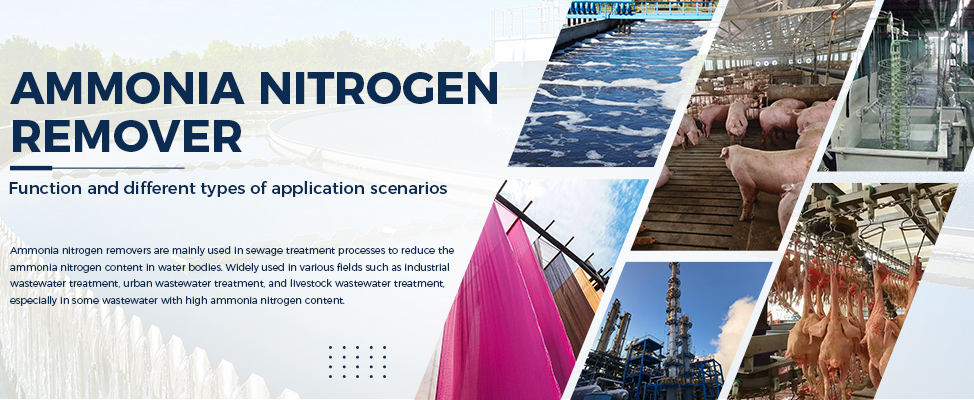As a 28-year professional manufacturer of wastewater treatment chemicals in China, we supply ammonia nitrogen removers to food factories, chemical plants, livestock farms, textile mills, and municipal projects. Different remover types work differently in wastewater, so choosing the correct one is essential for stable compliance.

| Type | Composition | Mechanism | Typical Removal Efficiency | Suitable Wastewater | Advantages | Notes |
|---|---|---|---|---|---|---|
| Chemical Oxidation | NaClO, PMS | Oxidation → N₂ | 60–95% | Low ammonia, domestic sewage | Fast reaction | Weaker in high COD |
| Biological Enhancement | Nitrifying & denitrifying bacteria | Biological conversion | 40–90% | High-organic wastewater | Sustainable, stable | Temperature sensitive |
| Chemical Precipitation | Mg²⁺, PO₄³⁻ | Struvite precipitation | 50–85% | Medium–high ammonia | Stable performance | Requires sludge removal |
| Catalytic Type | Metal catalysts | Catalytic oxidation → N₂ | 85–99% | High-concentration ammonia | Very high efficiency | Requires jar testing |
| Adsorption Type | Zeolite, activated carbon | NH₄⁺ adsorption | 30–70% | Low ammonia | Simple operation | Saturation occurs |
Food & Beverage Wastewater
Recommended: Catalytic type, biological type, PAM for sedimentation.
Chemical Wastewater
Recommended: Catalytic type (best for >200 mg/L), precipitation type for pretreatment.
Livestock Farming Wastewater
Recommended: Precipitation type + PAC + cationic PAM.
Textile Dyeing Wastewater
Recommended: Oxidation type + nonionic PAM.
| Product | Purpose |
|---|---|
| PAC | Reduce suspended solids |
| PAM | Improve settling performance |
| Decolorizing agent | For dyeing wastewater |
| pH adjuster | Maintains optimal pH 7–8.5 |
1. Dilute 1:10–1:20 before dosing
2. Stir for 3–5 minutes
3. Allow settling for 10–20 minutes
4. Use multi-stage dosing for high ammonia
We provide free jar tests for dosage optimization.
Q1: Can ammonia nitrogen removers treat high ammonia (>300 mg/L)?
A1 : Yes. Our catalytic remover achieves 90–99% removal.
Q2: Should PAC and PAM be used together with ammonia removers?
A2 : Yes. They improve removal efficiency.
Q3: Which product is suitable for livestock wastewater?
A3 : Precipitation or catalytic type + flocculant.
Q4: Will it affect COD?
A4 : Oxidation type slightly reduces COD; catalytic type has minimal effect.
Q5: Does it cause secondary pollution?
A5 : No, if dosed properly.

Please contact us for free quotation by form below. We promise the quickest response within 24 hours: